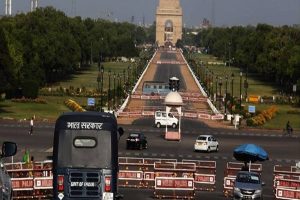Draft Regional Plan 2041:

The National Capital Region Planning Board (NCRPB) has recently approved the ‘Draft Regional Plan 2041’ according to which the National Capital Region (NCR) is likely to reduce in size.
- NCRPB was set up in 1985, to promote balanced development of the NCR and to avoid haphazard development
- The geographical size of the region will be a contiguous circular region of 100km radius from Rajghat (Delhi). The area in the 100km radius can be developed as a core area.
- NCR is a region envisaged in 1985 for coordinated urban development in and around Delhi.
- Beyond 100 km radius and up to the existing NCR boundary, all notified cities/towns along with a corridor of one km on either side of connecting expressways/national highways/state highways/Regional Rapid Transit System will be included.
- Currently, the NCR consists of 24 districts in Uttar Pradesh, Haryana and Rajasthan and entire Delhi, spread across an area of 55,083 square kilometres.
- The name of natural conservation zones, as introduced in the Regional Plan-2021 will be changed to “natural zones” in the upcoming Regional Plan-2041.
- States will be empowered to decide whether tehsils that fall partly inside the NCR boundary should remain in it or not.
- The DRP 2041 Plan will pave the way for a future-ready, slum-free National Capital Region with an air ambulance facility and high-speed connectivity through helitaxis, road, rail, and inland waterways.
- The Plan proposes to explore the feasibility of a 30-minute Mass Transit Rail System (MTRS) from the nearest NCR boundaries to Delhi.
- If implemented, parts of Panipat in Haryana and Muzaffarnagar in Uttar Pradesh will be dropped from the new NCR map.
- The idea is to have a compact area so that the development can be planned in a better manner.
- It will benefit the rural areas, as the state governments can plan for their development in a better manner.




